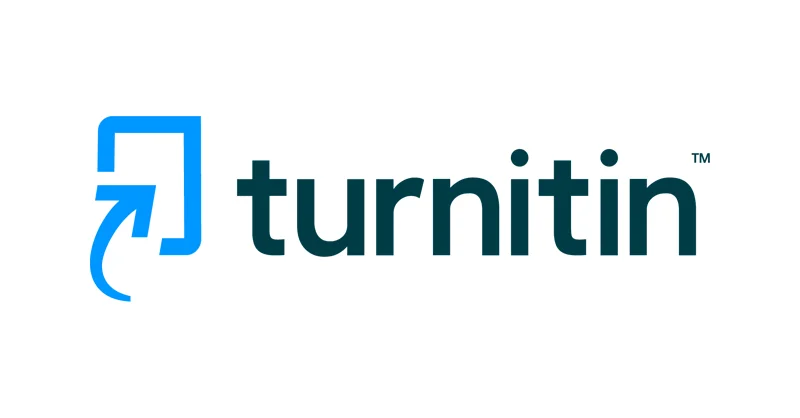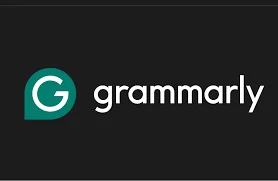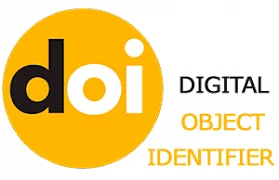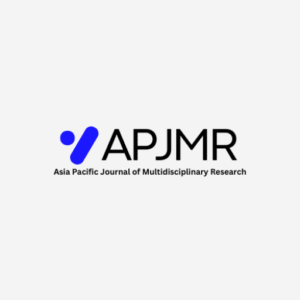Multidisciplinary journal is an academic or scholarly publication that publishes research across a wide range of area, rather than focusing on a single field. These journals allow work from the humanities, sciences, engineering, social sciences, health sciences, technology, arts, education, etc — sometimes even combining methods, perspectives, or topics that cross traditional disciplinary boundaries and many more.
features:
- Breadth of fields: from STEM to social sciences, arts, and humanities.
- Variety of article types: original research, reviews, case studies, short communications, theoretical or opinion pieces.
- Interdisciplinary or cross-disciplinary work: research that draws on more than one discipline, or offers perspectives that are relevant to several fields.
- Open / global audience: because topics are broader, readership tends to come from many different academic or professional backgrounds.
Why Multidisciplinary Journals Matter
Here are several reasons why multidisciplinary journals are important:
- Fostering Integration and Innovation
Many real-world problems (e.g. climate change, public health crises, education reform) don’t sit neatly in one discipline. Multidisciplinary journals encourage combining knowledge from different fields, which often leads to more holistic, innovative solutions. - Wider Audience & Visibility
A paper published in a multidisciplinary journal can reach readers in several disciplines, which can increase its impact and citation potential. Researchers from different fields may come across it. - Flexibility for Authors
If your research spans multiple fields, sometimes you don’t fit well into any single specialized journal. Multidisciplinary journals provide a good home for such work. - Encouraging Collaboration
These journals often attract collaborative teams (e.g. combining engineers, sociologists, health scientists) which can enhance the quality, scope, and relevance of research.
Key operational features:
- Peer review: Usually double-blind or single-blind review by experts from relevant disciplines.
- Open access: Many are open access, which helps with sharing broadly.
- Publication frequency: Varies (monthly, quarterly, bi-annual etc.).
- Ethics & quality: Strong editorial policies on originality, avoiding plagiarism, clear methodology etc.
National Research Asia Pacific Journal Of Multidiciplinary Research is an open access peer-reviewed, Refereed journal which considers manuscripts which comply our instruction with authors. The manuscripts are initially screened by the editorial members for its scientific content, format and relevance of the topic to APJMR. Once the manuscript is selected for peer review, the manuscript goes through a blinded peer review by competent individuals in the concerned specialty. All communications will be through e-mail.
Strict confidentiality will be maintained by the editorial board during review process with regards to identity of the authors and reviewers. Authors are expected to mention about all conflicts of interest related to the manuscript during initial and final submission. Any act of the author which may bias the content of the manuscript in a direct or indirect way like receiving consultation fees from companies marketing a particular product mentioned in the manuscript , partnership in a company selling the product etc. needs detailed mention and the same will be published as part of the article in the journal. Details of approval by institutional review board have to be produced by the authors if requested by the editorial board.
Once accepted for publication the authors will have to sign the copyright agreement with the journal indicating author’s willingness to give the first publication rights to APJMR and permit the journal to share the article with global database and libraries. The author retains the copyright of the material and will be acknowledged when utilized by the journal after the initial publication.
APJMR follows a continuous publication model in which article will be published as and when they are accepted. Articles published in a calendar year will then be submitted for indexing purposes. All articles published in APJMR can be utilized by the scientific community without any need for obtaining permission for off-prints from the journal.
Publication Ethics and Publication Malpractice Statement
Open access is an ongoing publication practice which differs in the way traditional methods of publishing papers to the public get submitted, reviewed, authenticated and finally published. In Open Access publication model neither readers nor a reader’s institution are charged for access to articles or other resources. Users are free to read, download, copy, distribute, print, search, or link to the full texts of these articles for any non-commercial purpose without requiring a subscription to the journal in which these articles are published. APJMR ethics are based on COPE
Asia Pacific Journal of Multidisciplinary Research(APJMR) follows the Open Access model. The publication cost should be covered by the author’s institution or research funds. These Open Access charges replace subscription charges and allow the APJMR to make the valuable published materials freely accessible to all interested online visitors, especially the researchers and young scholars from developing countries.
APJMR is peer reviewed & Refereed journal which is published by under the banner of National Press Associates. It is a direct reflection of the quality of the work of the authors and the institutions that support them. Peer-reviewed articles support and embody the scientific method. It is therefore important to agree upon standards of expected ethical behavior for all parties involved in the act of publishing: the author, the journal editor, the peer reviewer, the publisher and the society of society-owned or sponsored journals.
APJMR takes its duties of guardianship over all stages of publishing extremely seriously and we recognize our ethical and other responsibilities. APJMR committed to ensuring that advertising, reprint or other commercial revenue has no impact or influence on editorial decisions. In addition, Editorial Board will assist in communications with other journals and/or publishers where this is useful to editors.
Duties of Editors
1. Fair play and editorial independence: Editors evaluate submitted manuscripts exclusively on the basis of their academic merit (importance, originality, study’s validity, clarity) and its relevance to the journal’s scope, without regard to the authors’ race, gender, sexual orientation, ethnic origin, citizenship, religious belief, political philosophy or institutional affiliation. Decisions to edit and publish are not determined by the policies of governments or any other agencies outside of the journal itself. The Editor-in-Chief has full authority over the entire editorial content of the journal and the timing of publication of that content.
2. Confidentiality: Editors and editorial staff will not disclose any information about a submitted manuscript to anyone other than the corresponding author, reviewers, potential reviewers, other editorial advisers, and the publisher, as appropriate.
3. Disclosure and conflicts of interest: Editors and editorial board members will not use unpublished information disclosed in a submitted manuscript for their own research purposes without the authors’ explicit written consent. Privileged information or ideas obtained by editors as a result of handling the manuscript will be kept confidential and not used for their personal advantage. Editors will recuse themselves from considering manuscripts in which they have conflicts of interest resulting from competitive, collaborative, or other relationships/connections with any of the authors, companies or institutions connected to the papers; instead, they will ask another member of the editorial board to handle the manuscript.
4. Publication decisions: The editors ensure that all submitted manuscripts being considered for publication undergo peer-review by at least two reviewers who are expert in the field. The Editor-in-Chief is responsible for deciding which of the manuscripts submitted to the journal will be published, based on the validation of the work in question, its importance to researchers and readers, the reviewers’ comments, and such legal requirements as are currently in force regarding libel, copyright infringement and plagiarism. The Editor-in-Chief may confer with other editors or reviewers in making this decision.
5. Involvement and cooperation in investigations: Editors (in conjunction with the publisher and/or society) will take responsive measures when ethical concerns are raised with regard to a submitted manuscript or published paper. Every reported act of unethical publishing behavior will be looked into, even if it is discovered years after publication. AP-SMART editors follow the COPE Flowcharts when dealing with cases of suspected misconduct. If, on investigation, the ethical concern is well-founded, a correction, retraction, expression of concern or other note as may be relevant, will be published in the journal.
Duties of Editors
1. Contribution to editorial decisions: Peer review assists editors in making editorial decisions and, through editorial communications with authors, may assist authors in improving their manuscripts. Peer review is an essential component of formal scholarly communication and lies at the heart of scientific endeavor. AP-SMART shares the view of many that all scholars who wish to contribute to the scientific process have an obligation to do a fair share of reviewing.
2. Promptness: Any invited referee who feels unqualified to review the research reported in a manuscript or knows that its prompt review will be impossible should immediately notify the editors and decline the invitation to review so that alternative reviewers can be contacted.
3. Confidentiality: Any manuscripts received for review are confidential documents and must be treated as such; they must not be shown to or discussed with others except if authorized by the Editor-in-Chief (who would only do so under exceptional and specific circumstances). This applies also to invited reviewers who decline the review invitation.
4. Standards of objectivity: Reviews should be conducted objectively and observations formulated clearly with supporting arguments so that authors can use them for improving the manuscript. Personal criticism of the authors is inappropriate.
5. Acknowledgement of sources: Reviewers should identify relevant published work that has not been cited by the authors. Any statement that is an observation, derivation or argument that has been reported in previous publications should be accompanied by the relevant citation. A reviewer should also notify the editors of any substantial similarity or overlap between the manuscript under consideration and any other manuscript (published or unpublished) of which they have personal knowledge.
6. Disclosure and conflicts of interest: Any invited referee who has conflicts of interest resulting from competitive, collaborative, or other relationships or connections with any of the authors, companies or institutions connected to the manuscript and the work described therein should immediately notify the editors to declare their conflicts of interest and decline the invitation to review so that alternative reviewers can be contacted. Unpublished material disclosed in a submitted manuscript must not be used in a reviewer’s own research without the express written consent of the authors. Privileged information or ideas obtained through peer review must be kept confidential and not used for the reviewer’s personal advantage. This applies also to invited reviewers who decline the review invitation.
Duties of Authors
1. Reporting standards: Authors of original research should present an accurate account of the work performed and the results, followed by an objective discussion of the significance of the work. The manuscript should contain sufficient detail and references to permit others to replicate the work. Review articles should be accurate, objective and comprehensive, while editorial ‘opinion’ or perspective pieces should be clearly identified as such. Fraudulent or knowingly inaccurate statements constitute unethical behavior and are unacceptable.
2. Data access and retention: Authors may be asked to provide the raw data of their study together with the manuscript for editorial review and should be prepared to make the data publicly available if practicable. In any event, authors should ensure accessibility of such data to other competent professionals for at least 10 years after publication (preferably via an institutional or subject-based data repository or other data center), provided that the confidentiality of the participants can be protected and legal rights concerning proprietary data do not preclude their release.
3. Originality and plagiarism: Authors should ensure that they have written and submit only entirely original works, and if they have used the work and/or words of others, that this has been appropriately cited. Publications that have been influential in determining the nature of the work reported in the manuscript should also be cited. Plagiarism takes many forms, from “passing off” another’s paper as the author’s own, to copying or paraphrasing substantial parts of another’s paper (without attribution), to claiming results from research conducted by others. Plagiarism in all its forms constitutes unethical publishing behavior and is unacceptable.
4. Multiple, duplicate, redundant or concurrent submission/publication: Papers describing essentially the same research should not be published in more than one journal or primary publication. Hence, authors should not submit for consideration a manuscript that has already been published in another journal. Submission of a manuscript concurrently to more than one journal is unethical publishing behavior and unacceptable. The publication of some kinds of articles (such as clinical guidelines, translations) in more than one journal is sometimes justifiable, provided that certain conditions are met. The authors and editors of the journals concerned must agree to the secondary publication, which must reflect the same data and interpretation of the primary document. The primary reference must be cited in the secondary publication.
5. Authorship of the manuscript: Only persons who meet these authorship criteria should be listed as authors in the manuscript as they must be able to take public responsibility for the content: (i) made significant contributions to the conception, design, execution, data acquisition, or analysis/interpretation of the study; and (ii) drafted the manuscript or revised it critically for important intellectual content; and (iii) have seen and approved the final version of the paper and agreed to its submission for publication. All persons who made substantial contributions to the work reported in the manuscript (such as technical help, writing and editing assistance, general support) but who do not meet the criteria for authorship must not be listed as an author, but should be acknowledged in the “Acknowledgements” section after their written permission to be named as been obtained. The corresponding author should ensure that all appropriate coauthors (according to the above definition) and no inappropriate coauthors are included in the author list and verify that all coauthors have seen and approved the final version of the manuscript and agreed to its submission for publication.
6. Disclosure and conflicts of interest: Authors should (1) at the earliest stage possible (generally by submitting a disclosure form at the time of submission and including a statement in the manuscript). (2) disclose any conflicts of interest that might be construed to influence the results or their interpretation in the manuscript. Examples of potential conflicts of interest that should be disclosed include financial ones such as honoraria, educational grants or other funding, participation in speakers’ bureaus, membership, employment, consultancies, stock ownership, or other equity interest, and paid expert testimony or patent-licensing arrangements, as well as non-financial ones such as personal or professional relationships, affiliations, knowledge or beliefs in the subject matter or materials discussed in the manuscript. All sources of financial support for the work should be disclosed (including the grant number or other reference number if any).
7. Acknowledgement of sources: Authors should ensure that they have properly acknowledged the work of others, and should also cite publications that have been influential in determining the nature of the reported work. Information obtained privately (from conversation, correspondence or discussion with third parties) must not be used or reported without explicit, written permission from the source. Authors should not use information obtained in the course of providing confidential services, such as refereeing manuscripts or grant applications, unless they have obtained the explicit written permission of the author(s) of the work involved in these services.
8. Hazards and human or animal subjects: If the work involves chemicals, procedures or equipment that have any unusual hazards inherent in their use, the authors must clearly identify these in the manuscript. If the work involves the use of animals or human participants, the authors should ensure that all procedures were performed in compliance with relevant laws and institutional guidelines and that the appropriate institutional committee(s) has approved them; the manuscript should contain a statement to this effect. Authors should also include a statement in the manuscript that informed consent was obtained for experimentation with human participants. The privacy rights of human participants must always be observed.
9. Peer review: Authors are obliged to participate in the peer review process and cooperate fully by responding promptly to editors’ requests for raw data, clarifications, and proof of ethics approval, patient consents and copyright permissions. In the case of a first decision of “revisions necessary”, authors should respond to the reviewers’ comments systematically, point by point, and in a timely manner, revising and re-submitting their manuscript to the journal by the deadline given.
10. Fundamental errors in published works: When authors discover significant errors or inaccuracies in their own published work, it is their obligation to promptly notify the journal’s editors or publisher and cooperate with them to either correct the paper in the form of an erratum or to retract the paper. If the editors or publisher learns from a third party that a published work contains a significant error or inaccuracy, then it is the authors’ obligation to promptly correct or retract the paper or provide evidence to the journal editors of the correctness of the paper. For guidelines on retracting or correcting articles, please click here: http://www.ijeat.org/article-withdrawal.php
Duties of the Publisher
1. Handling of unethical publishing behavior: In cases of alleged or proven scientific misconduct, fraudulent publication or plagiarism, the publisher, in close collaboration with the editors, will take all appropriate measures to clarify the situation and to amend the article in question. This includes the prompt publication of an erratum, clarification or, in the most severe case, the retraction of the affected work. The publisher, together with the editors, shall take reasonable steps to identify and prevent the publication of papers where research misconduct has occurred, and under no circumstances encourage such misconduct or knowingly allow such misconduct to take place.
2. Access to journal content: The publisher is committed to the permanent availability and preservation of scholarly research and ensures accessibility by partnering with organizations and maintaining our own digital archive.
Copyright 2025: National Press Associates | All Rights Reserved
The journal is strictly against any unethical act of copying or plagiarism in any form. Plagiarism is said to have occurred when large portions of a manuscript have been copied from existing previously published resources. All manuscripts submitted for publication to APJMR are cross-checked for plagiarism using Turnitin/ iThenticate software. Manuscripts found to be plagiarized during initial stages of review are out-rightly rejected and not considered for publication in the journal. In case a manuscript is found to be plagiarized after publication, the Editor-in-Chief will conduct preliminary investigation, may be with the help of a suitable committee constituted for the purpose. If the manuscript is found to be plagiarized beyond the acceptable limits, the journal will contact the author’s Institute / College / University and Funding Agency, if any. A determination of misconduct will lead APJMR to run a statement bidirectionally linked online to and from the original paper, to note the plagiarism and provide a reference to the plagiarized material. The paper containing the plagiarism will also be marked on each page of the PDF. Upon determination of the extent of plagiarism, the paper may also be formally retracted.
Types of Plagiarism
The following types of plagiarism are considered by IJRTE:
1. Full Plagiarism: Previously published content without any changes to the text, idea and grammar is considered as full plagiarism. It involves presenting exact text from a source as one’s own.
2. Partial Plagiarism: If content is a mixture from multiple different sources, where the author has extensively rephrased text, then it is known as partial plagiarism.
3. Self-Plagiarism: When an author reuses complete or portions of their pre-published research, then it is known as self-plagiarism. Complete self-plagiarism is a case when an author republishes their own previously published work in a new journal.
Policy and Action for Plagiarism
APJMR respects intellectual property and aims at protecting and promoting original work of its authors. Manuscripts containing plagiarized material are against the standards of quality, research and innovation. Hence, all authors submitting articles to APJMR are expected to abide ethical standards and abstain from plagiarism, in any form. In case, an author is found to be suspected of plagiarism in a submitted or published manuscript then, APJMR shall contact the author (s) to submit his / her (their) explanation within two weeks, which may be forwarded to the Fact Finding Committee (FFC) constituted for the purpose, for further course of action. If APJMR does not receive any response from the author within the stipulated time period, then the Director / Dean / Head of the concerned College, Institution or Organization or the Vice Chancellor of the University to which the author is affiliated shall be contacted to take strict action against the concerned author.
APJMR shall take serious action against published manuscripts found to contain plagiarism and shall completely remove them from APJMR website and other third party websites where the paper is listed and indexed. The moment, any article published in APJMR database is reported to be plagiarized, APJMR will constitute a Fact Finding Committee (FFC) to investigate the same. Upon having established that the manuscript is plagiarized from some previously published work, IJRTE shall support the original author and manuscript irrespective of the publisher and may take any or all of the following immediate actions or follow the additional course of actions as recommended by the committee:
1. APJMR editorial office shall immediately contact the Director / Dean / Head of the concerned College, Institution or Organization or the Vice Chancellor of the University to which the author(s) is (are) affiliated to take strict action against the concerned author.
2. APJMR shall remove the PDF copy of the published manuscript from the website and disable all links to full text article. The term Plagiarized Manuscript shall be appended to the published manuscript title.
3. APJMR shall disable the author account with the journal and reject all future submissions from the author for a period of 03 / 05 / 10 years or even ban the authors permanently.
4. APJMR may also display the list of such authors along with their full contact details on the APJMR website.
5. Any other course of action, as recommended by the Committee or as deemed fit for the instant case or as decided by the Editorial Board, from time to time.
Open Choice: Your research. Your choice.
©2025 The author(s). Published by National Press Associates. This is an open access article under CC-BY License (https://creativecommons.org/licenses/by/4.0/)
APJMR is an open access journal. There is no registration required to read any article. “This is an open access journal which means that all content is freely available without charge to the user or his/her institution. Users are allowed to read, download, copy, distribute, print, search, or link to the full texts of the articles, or use them for any other lawful purpose, without asking prior permission from the publisher or the author. This is in accordance with the BOAI definition of open access.” Make your research more visible and accessible, immediately on publication. Authors are permitted and encouraged to post their work online (e.g., in institutional repositories or on their website) prior to and during the submission process, as it can lead to productive exchanges, as well as earlier and greater citation of published work
This journal provides immediate open access to its content on the principle that making research freely available to the public supports a greater global exchange of knowledge.
Authors retain copyright and grant the journal right of first publication with the work simultaneously licensed under a Creative Commons Attribution License that allows others to share the work with an acknowledgement of the work’s authorship and initial publication in this journal.
Authors are able to enter into separate, additional contractual arrangements for the non-exclusive distribution of the journal’s published version of the work (e.g., post it to an institutional repository or publish it in a book), with an acknowledgement of its initial publication in this journal.
Authors are permitted and encouraged to post their work online (e.g., in institutional repositories or on their website) prior to and during the submission process, as it can lead to productive exchanges, as well as earlier and greater citation of published work
Benefits of publishing open access with Open Choice
1. Increased researcher engagement: Open Choice enables access by anyone with an internet connection, immediately on publication.
2. Higher visibility and greater impact:
3. Easy compliance with mandates: Many funders require open access, and some take compliance into account when assessing future grant applications.
4. The copyright remains with you:
Copyright and license agreement
Copyright and Licence details of published articles
Authors who publish with this journal agree to the following terms:
1. ‘users can use, reuse and build upon the material published in the journal but only for non-commercial purposes’. Use, reuse and build upon refer specifically to the common definitions of open access”.
2. Authors are able to enter into separate, additional contractual arrangements for the non-exclusive distribution of the journal’s published version of the work (e.g., post it to an institutional repository or publish it in a book), with an acknowledgement of its initial publication in this journal.
In submitting a research article (‘article’) to “National Research Journal of Business Economics” I certify that:
1. I am authorized by my co-authors to enter into these arrangements.
2. I warrant, on behalf of myself and my co-authors, that:
(a) The article is original, has not been formally published in any other peer-reviewed journal, is not under consideration by any other journal and does not infringe any existing copyright or any other third party rights;
(b) I am/we are the sole author(s) of the article and have full authority to enter into this agreement and in granting rights to “Journal of Stress Physiology & Biochemistry” are not in breach of any other obligation.
(c) The article contains nothing that is unlawful, libellous, or which would, if published, constitute a breach of contract or of confidence or of commitment given to secrecy;
(d) I/we have taken due care to ensure the integrity of the article. To my/our – and currently accepted scientific – knowledge all statements contained in it purporting to be facts are true and any formula or instruction contained in the article will not, if followed accurately, cause any injury, illness or damage to the user.
(e) I agree to “APJMR”‘s Open Data policy.
And I agree to the Creative Commons Attribution License 4.0 agreement, under which all “APJMR” articles are licensed.
BRIEF SUMMARY OF THE AGREEMENT
Anyone is free to:
• Share—copy and redistribute the material in any medium or format
• Adapt—remix, transform, and build upon the material for any purpose, even commercially.
Copyright
Research articles
• Copyright on any research article in “APJMR” is retained by the author(s).
• Authors grant “APJMR” a license to publish the article and identify itself as the original publisher.
• Authors also grant any third party the right to use the article freely as long as its integrity is maintained and its original authors, citation details and publisher are identified.
• formalizes these and other terms and conditions of publishing research articles.
• In accordance with our Open Data policy, the Creative Commons CC0 1.0 Public Domain Dedication waiver applies to all published data in “APJMR” open access articles.
Authors’ certification
In submitting a research article (‘article’) to “APJMR” authors are requested to certify that:
They are authorized by their co-authors to enter into these arrangements.
They warrant, on behalf of themselves and their co-authors, that:
• the article is original, has not been formally published in any other peer-reviewed journal, is not under consideration by any other journal and does not infringe any existing copyright or any other third party rights;
• they are the sole author(s) of the article and have full authority to enter into this agreement and in granting rights to “APJMR” are not in breach of any other obligation. If the law requires that the article be published in the public domain, they will notify “Journal of Stress Physiology & Biochemistry” at the time of submission;
• the article contains nothing that is unlawful, libellous, or which would, if published, constitute a breach of contract or of confidence or of commitment given to secrecy;
• they have taken due care to ensure the integrity of the article. To their – and currently accepted scientific – knowledge all statements contained in it purporting to be facts are true and any formula or instruction contained in the article will not, if followed accurately, cause any injury, illness or damage to the user.
• they agree to all terms of the Creative Commons Attribution License 4.0 and Open Data policy.
In addition, once an article has been published, we do not allow it to be changed, leading to the following policies.
We welcome all visitors to our website. You are requesting to submit your manuscript for publishing . If you extend to browse and use this website you are agreeing to obey with and be bound by the following terms and conditions of use, which simultaneously with our privacy policy govern Asia Pacific Journal of Multidiciplinary Research(APJMR) relationship with you in concern to this website.
Asia Pacific Journal of Multidiciplinary Research (APJMR) is evolved to assist to better use of innovative data in academic field. It also assembles manuscripts for maintaining its Knowledge base which assists to find APJMR. Any material that is considered as not compatible with these guidelines can be partially or solely taken by APJMR without former observation. Word ‘Material’ is here to be appreciated as material encompassing, without limitation, text, video, graphics and sound material, released on our website.
Acknowledging the esteem of these guidelines is mandatory to be a member of APJMR. In any happening, the constituents (individuals or lawful entities) announcing material on APJMR , or conveying material via its connection tools accept, to the extent allowed at law, the full blame of any direct or indirect subsequent prejudice or lawful penalties (e.g. violation of someone’s thoughtful, house or human rights).
The use of this website is subject to the following terms of use:
Website www.apjmr.org contains data on pages of this website is for your general data and use only. Administrator has right to change these content any time without prior notice.
We and any third party associated with our website do not give any warranty or assurance regarding the accuracy, timeliness, presentation, completeness or suitability of the data for any particular reason. With the use of our website you accept that such information and components may comprise inaccuracies or defects and we expressly neglect liability for any such inaccuracies or errors to the fullest extent allowed by law.
The risk is solely transfer to the user/client/viewer while using of any information or components mentioned on this website, for which we shall not be held liable. It will be your own blame to ensure that any information, contents, or data accessible through this website meeting your specific requirements.
This website comprises contents/material facts which is owned by or licensed to us. This material encompasses, but is not restricted to, the envisage, layout, design, view and graphics of the website. Reproduction of content of our website or image is prohibited other than in agreement with the copyright observe, which forms part of these periods and conditions.
All marks/trade marks/logo/symbol duplicated in this website, which are not the house of, or permitted to the operator, are acknowledged on the website.
Unauthorised use of this website may give to a claim for damages and/or be a criminal offence.
From time to time this website may also include the web links of other websites. These links are provided with the consent of provider and for your convenience to provide required information. They do not signify that we endorse the website(s). We do not take any responsibility for the content of the linked other website(s).
Asia pacific Journal of Multidiciplinary Research is committed to maintaining your trust and confidence regarding your privacy. Please read this privacy policy of Research Review Journals carefully to understand our practices about how we collect, use and share your personal information.
About our privacy policy
This privacy policy applies when you visit or use our website, and other services, including conference/events, that refer or link to this privacy policy (each, a “Service”). This policy may be supplemented by additional privacy statements, terms or notices provided to you. The Research Review Journals company that owns or administers the Service, as identified therein, is the primary controller of your personal information provided to, or collected by or for, the Service.
Information we collect
We collect information about you in three ways: directly from your input, from third-party, and through automated technologies.
1. Contact details, such as your name, email, postal address, phone number.
2. Other profile information, including educational, professional and other background information, such as your field of study, current position, practice area and areas of interests, ORCID ID.
3. Content that you upload and share, such as annotations, comments, contributions and replies.
4. Information that you communicate to us, such as questions or information you send to us.
5. Data that you provide to us as part of interacting with the Service, such as your favorites and search queries.
Data from your institution
We may obtain information about you from the institution with which you are employed or affiliated in order to activate and manage your access to and use of the institution’s subscription to the Service, including:
1. Contact details, such as your name and institutional email address, postal address and phone number;
2. Other account registration information, such as job title; and/or
Data from other sources
We also may obtain contact details and other information about you from other entities and from third parties, including:
1. Social networks when that you grant permission to the Service to access your data on one or more networks;
2. Service providers that help us determine a location in order to customize certain products to your location;
3. Partners with which we offer co-branded services or engage in joint marketing activities; and/or
4. Publicly-available sources and data suppliers from which we obtain data to validate or supplement the information we hold.
How we use your information
We are committed to delivering a relevant and useful experience to you. Depending on how you interact with us and the Service, we use your personal information to:
1. Provide, activate and manage your access to and use of the Service;
2. Offer you user-friendly content and other personalization to make the Service more efficient for you and more relevant to your interests;
3. Enhance and improve the Service, such as add new content and features;
4. Notify you about changes, updates and other announcements related to the Service;
5. Deliver promotional messages and other information related to the Service and to your interests;
6. Respond to your requests, inquiries, comments or concerns;
7. Enhance and improve our products, events and services and develop new ones; and/or
8. Comply with our legal obligations, resolve disputes and enforce our agreements.
Sharing of your information
We share your personal information in the following ways and contexts.
1. Suppliers and service providers, including editors, reviewers, payment processors, customer support, email service providers, event venues and service providers, mailing houses, and IT service providers;
2. We share your email address with Third Party Community ‘ZENODO’;
3. Suppliers and service providers, including editors, reviewers, payment processors, customer support, email service providers, event venues and service providers, mailing houses, shipping agents and IT service providers;
4. We may also share your personal information with our group companies and with sponsors, joint venture partners and other third parties, including entities for which we are acting as an agent, licensee, application host or publisher, such as societies, that wish to send you information about their products and services that may be of interest to you as determined by your choices in managing your communications preferences and other settings.
Legal Reason
We also will disclose your personal information if we have a good faith belief that such disclosure is necessary to:
1. meet any applicable law, regulation, legal process or other legal obligation;
2. detect, investigate and help prevent security, fraud or technical issues; and/or
3. protect the rights, property or safety of Elsevier, our users, employees or others;
Use of Administrator Data
If you are an administrator of an institution with a subscription to a Service, we will use your details to communicate with you about your institution’s subscription and related services. If you supply us contact information of your colleagues, we may include a reference to you when we contact those individuals with communications about the Service.
Data retention
We retain your personal information for as long as necessary to provide the Service and fulfill the transactions you have requested, or for other essential purposes such as complying with our legal obligations, maintaining business and financial records, resolving disputes, maintaining security, detecting and preventing fraud and abuse, and enforcing our agreements.
Data security We take precautions to safeguard your personal information against loss, theft and misuse and unauthorized access, disclosure, alteration and destruction through the use of appropriate technical and organizational measures.
Locations of processing Location of processing the information provided by you is Delhi (India)
Contacting us Please submit any questions, concerns or comments you have about this privacy policy or any requests concerning your personal data by email info@npajournals.org
Q.1 How do I submit manuscript for publication?
Ans. Author(s) or contributors are invited to submit their research paper through email (info@npajournals.org). You can also submit paper online with our website. To submit paper online click here.
Q.2 Can I submit multiple papers for single issue?
Ans. You can submit more than one paper for single issue but we strongly recommend you to submit single paper per issue.
Q.3 How much time does your journal take to publish my paper/article?
Ans. Paper/article submitted to APJMR will initially be screened by editor and if it is found suitable for review then sent to reviewer(s). Review process will take maximum three weeks.
Q.4 What is the frequency of publication of APJMR?
Ans. APJMR is Biannual online & Print Journal.
Q.5 When I get acceptance notification?
Ans. Once your paper will be reviewed, editor will send you acceptance notification via email.
Q.6 Where can I find copyright form and paper template?
Ans. To download copyright form and paper template go to For Author’s Section
Q.7 How can I be reviewer or editorial board member?
Ans. To become a part of APJMR as a reviewer or editorial board member, you need to submit your profile online here.
Q.8 Which subject areas are covered in your journal for publication?
Ans. To know about the subject areas or disciplines covered in APJMR go to Research Areas.
Q.9 Will I get Hard copy of Journal and certificate?
Ans. National Research Journal of Business Economics Journal is Print and Online Journal. Author will get hard copy of Journal.
Q.10 I want to get my paper published on urgent basis will you?
Ans. Please note that your publication will solely depend upon reviewer(s) decision based on article having satisfactory plagiarism level as per UGC guidelines. We can not assure you urgent publication.
Q.11 How much plagiarised content of the article is allowed?
Ans. As per UGC maximum 10% plagiarism is allowed. For further clarification please refer our Plagiarism Policy.
Q.12 My query is not listed in FAQs. How can I convey my query?
Ans. Please feel free to contact us at info@npajournals.org






Publish Conference Or Seminar papers in our journal
Our journal welcomes the publication of high-quality research papers, review articles, and case studies presented at seminars, conferences and workshops. We provide a platform for scholars, academicians, researchers, and professionals to disseminate their work to a wider audience beyond the event.


